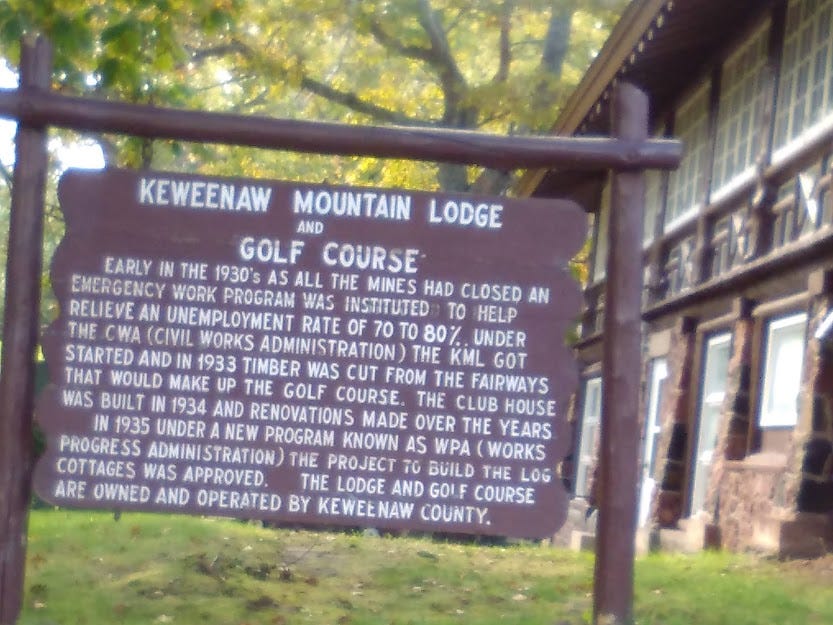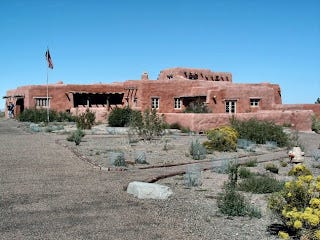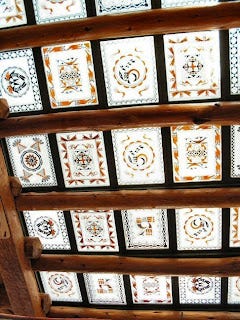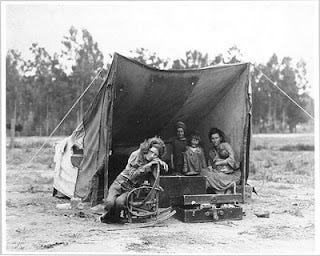Is Nothing Sacred in This Country?
The CCC, the WPA, and the need to preserve America's treasures.
You may have heard that parts of the Detroit area have been without power since Tuesday night, thanks to a massive ice storm. Turns out I am part of that ‘some’. It’s Saturday afternoon as I write this. Our power has been out since the wee hours of the morning on Wednesday, with no restoration in sight.
I’ve been wintering at my daughter’s house in Downriver Detroit, and wouldn’t you know? In all of Southeast Michigan, Downriver was hit the hardest and will be out the longest. We’re staying at my niece’s house for the duration and we’re warm and cozy and grateful. Extremely grateful. (The hotels are full, even those gouging the folks who have nowhere else to go—$400-$500 per night— and if I were out in the cold or thinking of a way to pay for a few nights’ lodging, I’d be spending my free time petitioning the government or organizing a class-action suit not conducive to any real work. I hope it’s happening. Damn them, anyway.)
But we’re not the only refugees here and it’s crowded. And noisy. So, in the meantime, I’m posting a piece I’ve been meaning to post anyway, ever since hearing the Republicans are working to privatize our cherished public spaces. Again. Or still.
(Can’t have all that prime property just sitting around when someone (not us though) could be making profits off of it.)
Are we really ready to sell off our national treasures to the privateers? Have we forgotten how hard it was to acquire them in the first place? I sure as hell haven’t—which is why I bring this up again.
Comments are always open. Let’s talk!
First published at Ramona’s Voices, 2/9/09:
I read an article in the New York Times today by Tracie Rozhon entitled "New Deal Architecture Faces Bulldozer". She writes:
"Hundreds of buildings commissioned by the Works Progress Administration and Roosevelt’s other 'alphabet' agencies are being demolished or threatened with destruction, mourned or fought over by small groups of citizens in a new national movement to save the architecture of the New Deal."
We have a nasty habit in this country when it comes to old buildings. We refuse to see value in them once walls begin to crumble and windows begin to fall out. No matter their history, when the time comes that they require some major TLC (and it will. They're OLD.) they become liabilities and committees quickly form to figure out how they can get around that old historical nostalgia thing and convince the public that an old building is just an old building and even when it's gone, they'll still have the memories.
"It’s ironic to be tearing [WPA structures] down just when America is going through tough times again,” wrote biographer Robert A. Caro in his 1974 book, “The Power Broker, “We should be preserving them and honoring them. They serve as monuments to the fact that it is possible to combine infrastructure with beauty.”
If you've gone across this country anywhere at all, chances are you've seen something that was built as part of Roosevelt's WPA Project, designed to put millions of people back to work in the 1930s.
You've seen beautiful bridges, roads, parks, and public buildings. You've seen murals in railroad stations and libraries, commissioned by the New Deal visionaries, and painted by out-of-work artists.
The Painted Desert Inn at Arizona's Petrified Forest National Park was a WPA project built in the 1930s by the young men and boys in the CCC (Civilian Conservation Corp). We visited it several years ago, and I was completely enthralled by the work that went into it. As a works project during the depression, the designers and facilitators could simply have put up a utilitarian building and left it at that. But they made it a work of art to complement the stunning beauty of its surroundings.
It had been abandoned and neglected until recent years, but thanks to more current visionaries, it's been lovingly restored. It is no longer an inn, but the murals, the chandeliers, the painted glass ceiling and the magnificent stucco work of the 1930s are intact. (Click here to see more pictures of the building.)
In my online travels researching this post, I found this remarkable website with photos of some of the other WPA projects across the country. It's not complete by any means--there were thousands--but it gives an idea of the scope of the projects, and, more importantly, the worth.
You've seen the heartbreaking photographs of Dorothea Lange and Walker Evans and you've read the clear and poignant words of writers like Eudora Welty, Saul Bellow, John Cheever, Richard Wright and Zora Neale Hurston--all employed by the government during the days of the WPA.
"I saw and approached the hungry and desperate mother, as if drawn by a magnet. I do not remember how I explained my presence or my camera to her, but I do remember she asked me no questions. I made five exposures, working closer and closer from the same direction. I did not ask her name or her history. She told me her age, that she was thirty-two. She said that they had been living on frozen vegetables from the surrounding fields, and birds that the children killed. She had just sold the tires from her car to buy food. There she sat in that lean- to tent with her children huddled around her, and seemed to know that my pictures might help her, and so she helped me. There was a sort of equality about it. "
(From: Popular Photography, Feb. 1960. Dorothea Lange describing the series of migratory farm labor photographs she took in February or March of 1936 in Nipomo, California called "Migratory Mother")
Yes, the New Deal WPA programs were make-work projects. And yes, they could be considered entitlements, since their work wasn't what most would consider "necessary". But oh, the treasures they produced! (Deny that, you dolts in Washington, who still believe, all evidence to the contrary, that the heart and soul of this country lies in keeping the Upper Class uppermost).
In "American Life Histories", from the Library of Congress, I found manuscripts from the Federal Writer's Project, 1936-1940. Every state in the union produced a WPA guidebook written by the writers of the day. In one of them, for the Georgia Writer's Project, Mrs. Ada Redford interviewed Mr. Clifford Farr, owner of the Skinner Clothing Company in Augusta on July 17, 1940. Here's an excerpt:
Ada Redford: "What do you think caused the depression?"
Clifford Farr: "It would take a more brilliant mind than mine to tell you the real cause. My ideas along with a lot of other small merchants is about the same. It was Wall Street against the world, along with a political upheaval, in other words, a Republican trick. Millionaires were made over night from the life savings of others. The war got the credit for a lot of and rightly so. I remember the close of the Spanish American War; cotton dropped to 3 1/2 and 4 cents a pound, why? Politics and the little man being crushed and beggared by the man or men who were in power. Take my business for instance; before the last depression fourteen families were being supported from it; my own personal loss was 50%. I was worth around $40,000 with an income of $5,000. That was cut in half and today my average is a little more than $3,000."
Ada: "What do you think of conditions today?"
Clifford: "They are about the same as the pre-war days of the last World War. When this program is over, there will be an increase in business. The present administration is wise now to all the Republican tricks and there will not be another depression such as Hoover and the Republicans caused. The people in our country know now that it was a political trick to enrich the big man and make beggars out of the little man. We have more unemployed than any other country in the world today, and the cry is that this is a machine age. That is true, to a great extent, but who built the machines? Where did the money come from? Out of the pockets of the working man? Again I say, 'Wall Street against the world.' "
These words, those photographs, along with the thousands of other treasures that came out of the New Deal, not only should be, but must be preserved. There are tribes of dangerous power-mongers who want to re-write history and ignore the obvious signs of a country turning back on itself, but we can't let that happen.
Those buildings, those parks, those bridges, those artworks, those words, were crafted by a people who came out of a darkness artificially created by hubris and greed. They built a new America for us. The least we can do to preserve the memory of those hard times is to preserve the wonders their hard labor created after the New Deal administration finally saw the light and gave them hope.









The answer to your question is no. I don't think there is anything sacred in this country any longer. As Every belief I had about what America stood for is being questioned and thrown under the bus, so to speak.